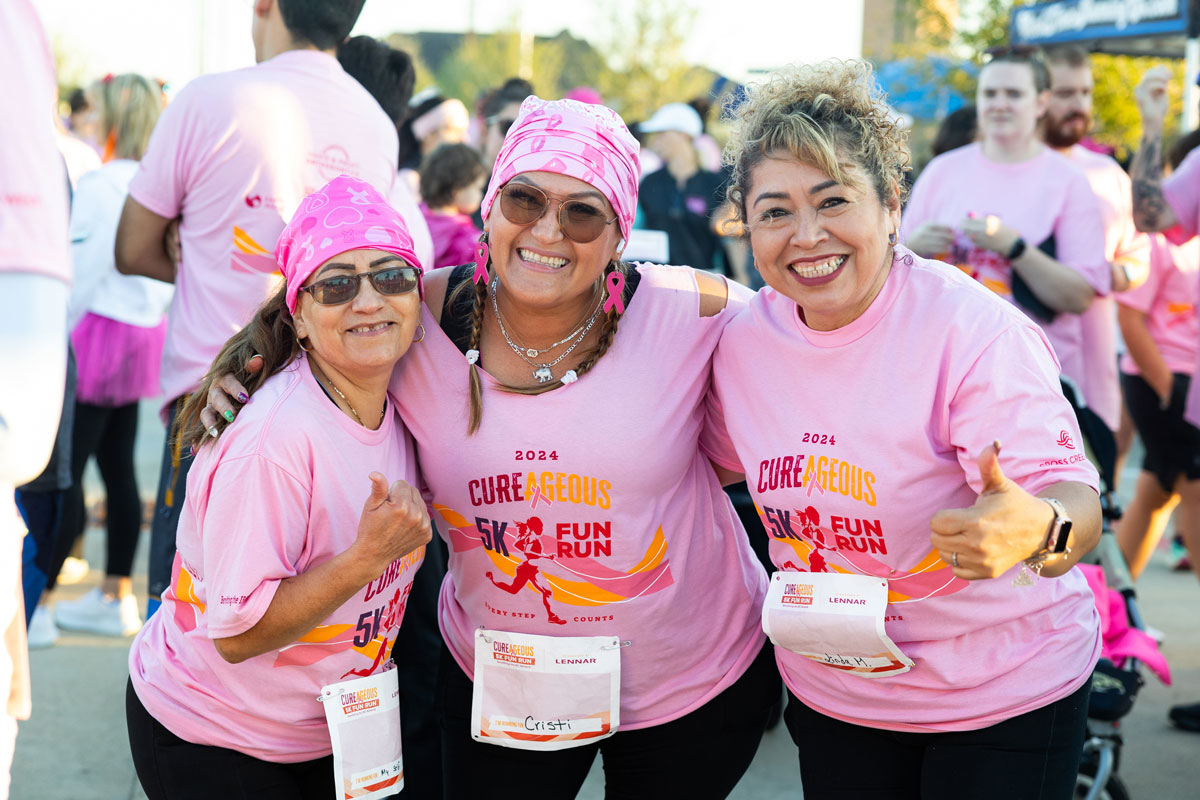CURE-Ageous 5K Again Shines Light on IBC

Staying active is important to your health. The CURE-Ageous 5K Fun Run goes beyond encouraging people to get moving, however. Benefiting the IBC Network Foundation, it raises awareness of one of the rarest and most aggressive types of breast cancer — Inflammatory Breast Cancer (IBC).
We hosted our inaugural CURE-Ageous race last year, raising $15,000 for the IBC Network Foundation and attracting more than 500 racers and their supporters, fostering community and spreading the word about this dangerous disease. This year, we’re hoping to do it again, with a race Saturday, Oct. 18. The fun begins at 7:15 a.m. as racers enjoy warm-up activities. The 5K starts promptly at 8 a.m. Strollers and well-behaved dogs are welcome.
The after-party will be a celebration with food trucks, yard games, face painting, and more. It will also be an important lesson on IBC, with speakers sharing information about the cancer.
Because IBC isn’t characterized by lumps in the breast, it is extremely hard to diagnose, which delays life-saving treatment. By raising awareness through our Oct. 18 race, we hope more people might recognize the signs of IBC.
Why Is IBC Hard to Diagnose?
Most breast cancers start with a noticeable lump in the breast. Not so with IBC. Instead, IBC symptoms include:
- Skin discoloration
- Sudden and persistent rash
- Swelling or firmness in one breast
- Persistent itching or burning
- One breast feels warmer than the other
- Skin appearing pitted like an orange peel
- Swollen lymph nodes near the collarbone or under the arm
Mammograms typically can’t diagnose inflammatory breast cancer. Instead, doctors rely on a clinical exam, biopsy, MRI, or ultrasound. But because the symptoms of IBC can indicate other conditions such as an infection, doctors often don’t immediately consider cancer. In fact, it took Terry Arnold, the founder of the IBC Network, four months to receive a correct diagnosis. And when IBC is diagnosed, it is classified as Stage 3 and sometimes Stage 4 if it has spread outside the breast and skin to other organs.
IBC is very aggressive, with most patients not living past two years. When Terry was eventually diagnosed, she was told repeatedly that she didn’t have long to live. Luckily, she is an 18-year survivor and loves that “no evidence of disease” is listed on her medical chart.
When Terry was first diagnosed, she found very little information about IBC on the internet. Today — in large part because of the foundation she formed — it’s listed on websites for the American Cancer Society, Susan G. Komen, and other popular resources. Arming patients and doctors with this information helps people get treated much sooner than in previous years, increasing their chances for survival. Inflammatory breast cancer is still considered to have a high fatality rate. But with the help of the IBC Network and fundraisers such as our CURE-Ageous 5K Fun Run, awareness of the disease is greater and more research being done. We raised $15,000 for the IBC Network last year. Want to help us raise even more this year? Sign up for the race now!
Other Facts About IBC
- Tends to be diagnosed at earlier ages than other breast cancers
- It is more commonly diagnosed in Black women
- IBC tumors are often hormone receptor negative, which means that hormone therapies that can interfere with the growth of cancer cells fueled by estrogen may not be effective against these tumors
- Inflammatory breast cancer is more common in obese women
- Causes for IBC are unknown, and there is not a form of detection prior to Stage 3